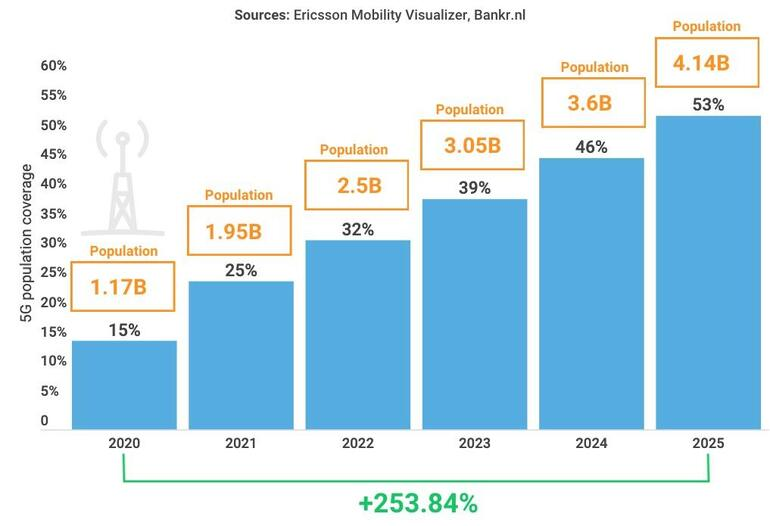In retrospect, we might argue about whether the adoption rate of 4G globally or in any single country "has really mattered," and if so, how, and for whom. Without a doubt, 4G has mattered for video content providers, social media apps and platforms. Given widespread consumer use of such apps, it is arguably the case that consumers have benefited. It is less clear it has benefited mobile operators as much.
What happens with 5G is unclear at the moment.
We aren’t sure yet how fast 5G will be adopted, compared to 4G experience. For that reason, subscriber totals in five years will vary quite a lot: as much as 100 percent. What is more important is the average revenue per user or average revenue per account trend.
Can 5G lift ARPU or ARPA, and if so, by how much?
If there is no ARPU or ARPA change, then the number of 5G accounts swapped for 4G will not matter much, in the near term. Longer term, it will matter if new use cases--requiring 5G capabilities--develop.
Scale matters, so adoption rates matter. New use cases will develop faster when developers can assume a significant portion of users have the new 5G capabilities.
There will be 3.9 billion 5G mobile subscriptions globally by the end of 2026, GlobalData predicts. GSMA, on the other hand, estimates there will be 1.8 billion 5G mobile subscriptions in 2025. At a 20-percent growth rate, that implies 2026 subscriptions of perhaps 2.2 billion.
On a base of nearly nine billion accounts, those forecasts imply adoption ranging from a low of 20 percent to more than 40 percent by 2026.
Statista estimates 2026 5G subscriptions at about 3.5 billion; Bankr suggests 5G subscriptions will reach four billion as early as 2025. Ericsson forecasts about 3.5 billion 5G accounts by 2026.
Much hinges on the predicted adoption rate, the expected adoption inflection point and the time of 5G availability. It took four to five years from launch for 4G to reach a growth inflection point, where the rate of adoption accelerates.

source: Ericsson
The issue is whether 5G is adopted at the same pace, faster or slow than 4G. It also matters when 5G is launched in each country and how fast mobile operators decide to deploy. Many operators are controlling 5G capital investment by deploying at a deliberate and measured pace. That also has implications for subscriber figures.

source: Bankr
Perhaps of equal importance are 5G average revenues per account. GlobalData expects global 5G service revenues in 2026 of $609 billion, propelled by monthly average revenue per user (ARPU) of $14.15, more than double 4G’s monthly ARPU. That would be a really big deal, if it happens.
As always, “average” might not mean much, as account revenue ranges from a dollar or two dollars in some countries to more than $40 in other countries.

source: S and P Global Market Intelligence
Still, the real question is not how fast 5G is adopted, but what the revenue implications might be. A bit faster or slower is an issue, but not so much as wether revenue per account is the same as 4G, lower than 4G or higher.
A doubling of ARPU or ARPA would be truly significant.
App providers might gain from new 5G platforms able to use specific 5G-enabled capabilities (speed, latency, network slices, edge computing, internet of things, private networks). As those features are rolled out, consumers should benefit from experiences not possible on 4G and older networks.
The big surprise would be if mobile operators also directly benefited in terms of business models, revenue and profit. Also, how much they could benefit will be important.
